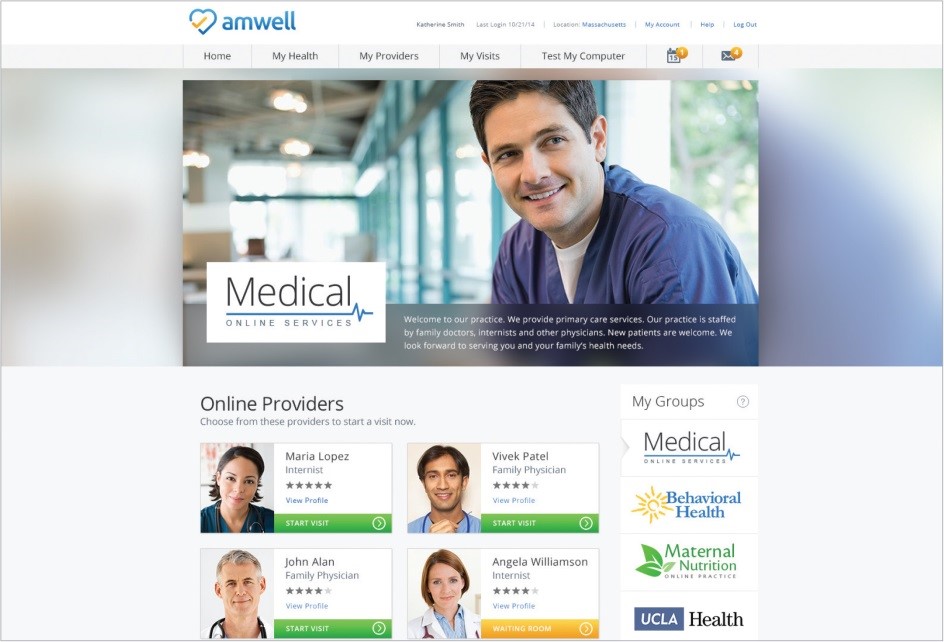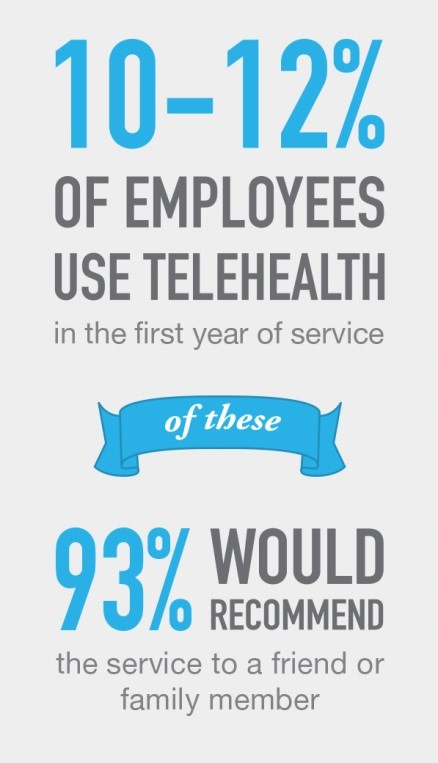Seventy-four percent of employers plan to offer telehealth in 2016, up from just half in2015!
|The rapid adoption of telehealth is typically credited as beingdriven by health care providers, but it's actually employers whoare leading this charge.
|Why are employers moving toward telehealth?
|The short answer is cost and access. Telehealth decreasesthe costs of health care for employers and it also increases accessto care for employees, making it a win-win for benefitsmanagers.
|As employers search for the right telehealth offering for theiremployees, it can be hard to figure out what makes a greattelehealth offering. Here are the six key factors employersshould consider when selecting a telehealth service:
|1. Video Visits (Not Just Telephone)
|There can be a lot of confusion around what constitutes a trulyvaluable “telehealth service,” because the term telehealth canrefer to video, telephone, and other health care technologies. Whensearching for a telehealth service, employers should look for onethat offers video visits.
|Why? Because the Federation of State Medical Boards (FSMB)recently adopted new guidelines for the safe practice oftelehealth, and in the policy, they stipulate that telehealth isnot an audio-only conversation, but instead involves securevideoconferencing.
|Secure chat and telephone can play an important backup role, butthey should not be the main care delivery mechanisms of atelehealth service. Employers should look for services that offerreal-time video. Video is critical because it allows patients toform a stronger, more meaningful connection with their doctor andit allows the doctor to better assess and treat the patient.
|2. Choice of Doctor
|Just as employees appreciate being able to choose theirin-office primary care physician, they will also want to choose adoctor for their online video visit, and a telehealth serviceshould allow them to do so.
|There are many myths surrounding telehealth, including the myththat online doctors aren't legitimate medical professionals. Thetruth is that a trusted telehealth service employs onlyboard-certified, qualified doctors. A telehealth service needs tobe completely transparent in allowing employees to see whichdoctors are available for consults. Each doctor should have aprofile with his or her educational background and ratings fromother patients. This type of transparency, and choice, allowsemployees to make informed decisions for their telehealthvisits.
|3. Benefits Integration
|Employees want telehealth to be as integrated as possible intotheir benefits. If employees pay just a co-pay for anin-person doctor's care, they want to be able to do the same fortheir telehealth service. Or, if they have a high deductible plan,they want the ability to easily count their visit cost toward theirdeductible, and to use pre-tax health savings account dollars topay for a visit.
|Additionally, benefits integration makes the rollout processsmooth and efficient for the benefits manager.
|The best telehealth services have the ability to integratebenefits, as well as make real-time eligibility calls to verify apatient's coverage, services, and co-pays.
|4. Company Branding and Customization
|A telehealth service is a great added benefit for employees. Forit to be successful, it's important for employees to trust theservice they're using and be reminded of how much their companyvalues them and their well-being when they use it.
|A telehealth service can allow an employer to put its ownbranding and stamp on the platform, for example placing a companylogo on the service or making the provider population reflect theemployee population's specific needs.
|Customization can also include incorporating any onsite clinicalstaff an employer may have, allowing them to extend care tosatellite locations, employees who work from home, or employees'family members.
|
5. 24/7 Access
|Your employees might require access to health care at any timeof day and giving them the ability to receive that health care whenthey really need it increases efficiency and satisfaction foreveryone. Not all telehealth services can provide 24/7/365 accesswith clinicians available at any hour, but it's an important valueproposition for telehealth. Employees want access to care when theymost need it, and employers want to make sure that a service canrespond to needs of different shift schedules or employeepopulations.
|6. Marketing Support
|What good is a great telehealth service if employees don't knowabout it? Just like any other health care benefit, employees needto be aware of and educated about how and when to use telehealth,so that when the time comes, they're ready—and remember—to useit.
|Telehealth services can offer resources and best practices tohelp engage employees and make the most of the service. Drivingawareness and utilization is key to cost saving—which is whymarketing support is a must!
|
To learn more about selecting the right service and otheremployer best practices for telehealth, download American Well's Employer Best Practicese-book.
Complete your profile to continue reading and get FREE access to BenefitsPRO, part of your ALM digital membership.
Your access to unlimited BenefitsPRO content isn’t changing.
Once you are an ALM digital member, you’ll receive:
- Critical BenefitsPRO information including cutting edge post-reform success strategies, access to educational webcasts and videos, resources from industry leaders, and informative Newsletters.
- Exclusive discounts on ALM, BenefitsPRO magazine and BenefitsPRO.com events
- Access to other award-winning ALM websites including ThinkAdvisor.com and Law.com
Already have an account? Sign In
© 2024 ALM Global, LLC, All Rights Reserved. Request academic re-use from www.copyright.com. All other uses, submit a request to [email protected]. For more information visit Asset & Logo Licensing.








